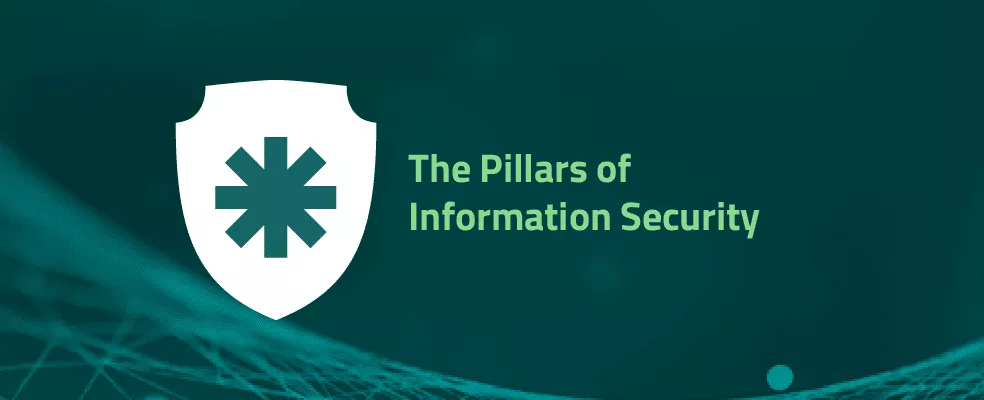
In today’s digital world, cybersecurity is more important than ever. With the increasing number of cyber attacks, it’s crucial to have a comprehensive cybersecurity strategy in place to protect your sensitive data and systems. There are seven pillars of cybersecurity that form the foundation of an effective cybersecurity strategy: Confidentiality, Integrity, Availability, Authentication, Authorization, Non-repudiation, and Accountability.
1. Confidentiality:
Confidentiality is the first pillar of cybersecurity. It refers to the protection of sensitive data from unauthorized access. Confidentiality ensures that data is only accessible to those who have the proper authorization and need to know. This can be achieved through the use of access controls, encryption, and other security measures.
For example, an organization might use access controls to limit the number of people who have access to sensitive data. Encryption can be used to protect data in transit, such as when it’s being transmitted over a network. By using these and other security measures, an organization can ensure that their sensitive data remains confidential.
2. Integrity:
Integrity is the second pillar of cybersecurity. It refers to the protection of data from unauthorized modification or deletion. Integrity ensures that data is accurate, complete, and has not been tampered with. This can be achieved through the use of backups, data validation, and checksums.
For example, an organization might use backups to ensure that they can recover from a data loss event. Data validation can be used to verify that data has not been modified or corrupted. Checksums can be used to ensure that data has not been tampered with during transmission.
3. Availability:
Availability is the third pillar of cybersecurity. It refers to the assurance that systems and data are available when needed. Availability ensures that data and systems are accessible to authorized users and that downtime is minimized. This can be achieved through the use of redundancy, failover systems, and disaster recovery planning.
For example, an organization might use redundant servers to ensure that they can continue to operate in the event of a server failure. Failover systems can be used to ensure that there is no downtime in the event of a system failure. Disaster recovery planning can be used to ensure that an organization can recover from a disaster, such as a natural disaster or a cyber attack.
4. Authentication:
Authentication is the fourth pillar of cybersecurity. It refers to the process of verifying the identity of users and devices before granting access to data or systems. Authentication ensures that only authorized users and devices can access data and systems.
For example, an organization might use two-factor authentication to ensure that users are who they claim to be. This might involve using a password and a token or biometric authentication. By using strong authentication methods, an organization can ensure that their systems and data are secure.
5. Authorization:
Authorization is the fifth pillar of cybersecurity. It refers to the process of determining what level of access users or devices should have to data or systems. Authorization ensures that users and devices only have access to the data and systems that they need to do their jobs.
For example, an organization might use role-based access control to ensure that users only have access to the data and systems that they need for their job roles. By using strong authorization methods, an organization can ensure that their systems and data are secure.
6. Non-repudiation:
Non-repudiation is the sixth pillar of cybersecurity. It refers to the assurance that a user or entity cannot deny that they took a specific action or accessed specific data. Non-repudiation ensures that users and entities are held accountable for their actions.
For example, an organization might use digital signatures to ensure that a user cannot deny that they signed a document. By using non-repudiation methods, an organization can ensure that users and entities are held accountable for their actions.
7. Accountability:
Accountability is the seventh pillar of cybersecurity. It refers to the ability totrace and attribute actions to specific users or entities. Accountability ensures that users and entities can be held responsible for their actions.
For example, an organization might use logging to record all system activity. This allows the organization to trace and attribute actions to specific users or entities. By using strong accountability methods, an organization can deter bad actors from engaging in malicious activities.
Conclusion:
In conclusion, the seven pillars of cybersecurity are crucial for building a comprehensive cybersecurity strategy. By ensuring confidentiality, integrity, and availability of data, as well as implementing strong authentication, authorization, non-repudiation, and accountability measures, organizations can protect their sensitive data and systems from cyber threats. As the cybersecurity landscape continues to evolve, it’s important for organizations to stay up to date on the latest threats and best practices to keep their systems and data secure.
Credits/Sources:
ChatGPT for content creation.
Header Image: https://senhasegura.com/the-pillars-of-information-security/

